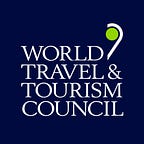Tourism Beyond the Obvious — top 10 lists of countries’ Travel & Tourism growth over the past 5 years
When people think about Travel & Tourism, thoughts mostly conjure holidays, beaches, city destinations, and business trips. Whilst many people travel to get to know different cultures and some also actively think about contributing to local communities and countries through their travel spent, the actual socio-economic benefits of Travel & Tourism are less known to the traveller.
Every year the World Travel & Tourism Council (WTTC) launches its Economic Impact Reports, which provide detailed insight into the economic impact of Travel & Tourism on the global, regional, and country level.
Economic Driver
Covering 184 countries and 24 regions the research looks at the contribution of Travel & Tourism as a percentage of the total economy. For example, globally the sector generated USD$ 7.2 trillion or 9.8% of the world’s global GDP in 2015. Additionally, the study highlights how Travel & Tourism drives employment. In 2015, Travel & Tourism supported the addition of 7.2 million jobs to the global economy, supporting over 284 million jobs worldwide.
This year’s Economic Impact Reports strongly showed three important developments, in line with global socio-economic trends, that have influenced the growth of our sector. These are how the strength of the US dollar impacts Travel & Tourism in the Americas; the importance of Travel & Tourism to oil exporting countries in times of low oil prices; and China’s outbound travel boom and its inbound travel potential.
Tourism as a force for good
Travel & Tourism not only brings cultures closer together but also contributes heavily to a country’s economic performance. This of course differs depending on the percentage share the sector has in a country, some countries are as reliant as 90% of the country’s GDP coming from Travel & Tourism, whilst other countries only see 2% of their income come from our sector.
In order to give you a peek into the Economic Impact Report’s data, we have created top 10 country lists based on three different Travel & Tourism performance measures over the past five years.
Top 10 total T&T GDP % annual average growth
The below table looks at which 10 countries have seen the highest average growth of total Travel & Tourism GDP over the period of 2010–2015. The list gives you an idea of which countries have been growing when it comes to Travel & Tourism income. Investment into the Travel & Tourism sector is one of the factors that drive growth. Countries such as Qatar and Azerbaijan have also profited from hosting high-profile events: the Eurovision and the upcoming World Cup in 2018. Furthermore, government expenditure on destination marketing also has great positive impact on the growth; you can witness this in Panama and Ecuador, specifically.
Myanmar’s Travel & Tourism income has grown rapidly as the country only opened up in 2010 to foreign visitors after the end of military junta rule. This is similar for Sri Lanka, where development of tourism increased following the end of civil war in 2009.
Top 10 visitor exports % annual average growth 2010–2015
The top 10 countries in the table below are based on the average annual growth of visitor exports, which is money spent by foreign travellers in the country over the last five years. The visitor exports list shows the top 10 countries that have seen an increase in international expenditure by travellers, which is closely linked to the number of international visitors.
There are some interesting results. There has been a high interest from foreign tourists in Myanmar and Sri Lanka, as they are relatively ‘unvisited’ destinations.
The growth of outbound travel markets also played a role. Kyrgyzstan saw an increase in Russian visitors, while Japan benefited greatly from the Chinese outbound boom, as well as better visa facilitation programmes.
Sudan’s spot at #2 is relative to its small market size, which means that small changes lead to significant growth in percentage terms. This applies for São Tomé and Príncipe as well.
Other countries in the list have experienced growth because they have invested heavily into tourism infrastructure and increased promotion.
Top 10 outbound T&T expenditure % annual average growth
The last table here is based on the growth of outbound expenditure over 2010–2015. This table shows you which countries have started travelling more abroad over the last five years.
In general, outbound growth is a reflection of the economic growth within the country, especially in terms of rising levels of disposable incomes among the population.
You can see that the top of the list is made up of the BRIC countries, where — despite difficulties — the economy has clearly been growing rapidly over the past five years. China has seen some very impressive outbound growth and is forecast to overtake the US as the largest outbound travel market. Similarly, Mexico, Indonesia, and Turkey are also recognised as large emerging markets that have experienced strong economic growth.
The US economy has been gradually recovering and strengthening after the depths of the financial crisis in 2008/2009, which has allowed consumers to spend more money on outbound travel, which also includes the increase in business travel as business and trade picked up. Another important factor contributing to the growth of the US outbound market recently is the strong US dollar, as foreign countries become cheaper for American travellers.
For the full Economic Impact Reports 2016 Country Reports, please visit our dedicated page.
For the media stories on the Economic Impact Reports, please click here.
The WTTC Global Summit 2016 in Dallas, TX will explore some of these issues and more. Tune in to the WTTC homepage on 6–7 April 2016 to watch the Summit livestream.
